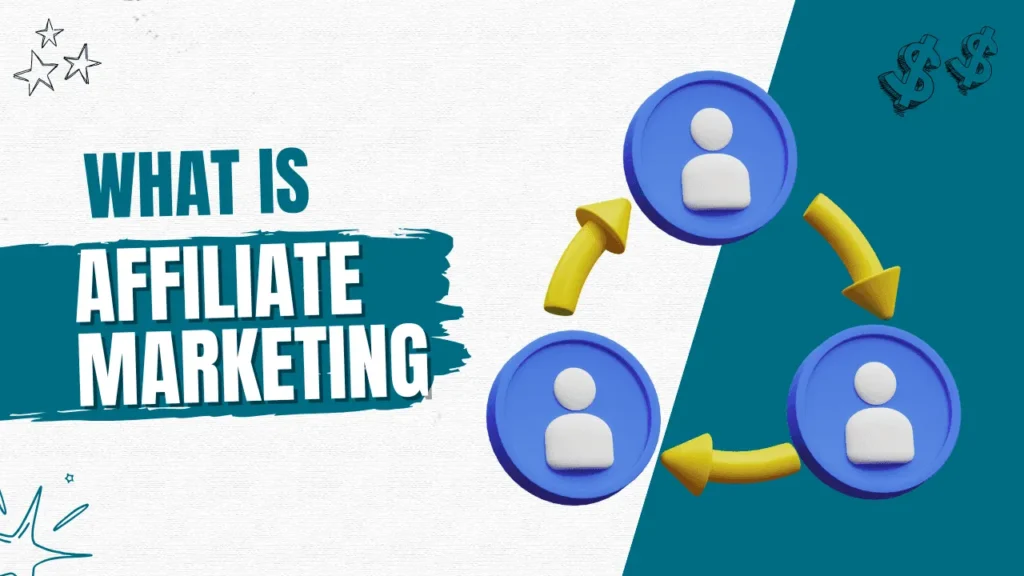Affiliate marketing has become one of the most popular and effective ways to earn passive income online. For businesses, it’s a cost-efficient way to increase sales, while for individuals, it offers the opportunity to monetize their skills and platforms. This guide explains what affiliate marketing is, how it works, and provides a step-by-step guide to get started.
What Is Affiliate Marketing?

Affiliate marketing is a performance-based marketing model where affiliates earn a commission for promoting a business’s products or services. It is a win-win relationship: businesses expand their reach, while affiliates earn income by driving traffic or sales.
Definition
Affiliate marketing involves three key players:
- The Merchant (Advertiser): The business offering a product or service.
- The Affiliate (Publisher): The individual or organization promoting the merchant’s products.
- The Consumer: The end-user who makes a purchase or completes a specific action through the affiliate’s efforts.
How It Works
The process of affiliate marketing can be broken down into the following steps:
- Joining an Affiliate Program:
- Affiliates sign up for programs offered directly by merchants or through affiliate networks. These programs provide tracking links and promotional materials.
- Promoting Products or Services:
- Affiliates share their unique links through websites, blogs, social media, or email campaigns to reach potential customers.
- Earning Commissions:
- When a consumer clicks on the affiliate’s link and completes a purchase, the affiliate earns a commission. Commission rates vary depending on the program and product.
How to Get Started with Affiliate Marketing?

Embarking on your affiliate marketing journey involves several crucial steps. Here’s a detailed roadmap to help you begin:
1. Choose Your Niche
Selecting a niche is the foundation of a successful affiliate marketing business. A focused niche allows you to create targeted content and build trust with your audience.
- Tips for Choosing a Niche:
- Align your niche with your interests or expertise.
- Research market demand and competition.
- Popular niches include:
- Health and wellness
- Technology and gadgets
- Finance and investing
- Travel and lifestyle
2. Research Affiliate Programs
After defining your niche, research affiliate programs that align with your audience’s needs. Look for programs with the following features:
- Reputable Merchants: Work with trusted companies.
- Competitive Commissions: Ensure the payout rates are worth your time.
- Reliable Payment Structures: Choose programs that offer consistent and timely payments.
Top Affiliate Programs for Beginners:
- Amazon Associates: A vast selection of products with high conversion rates.
- ShareASale: A large network of merchants in various niches.
- CJ Affiliate: Partnerships with top brands.
- Rakuten Marketing: Global reach and advanced tools.
3. Build a Platform
To succeed in affiliate marketing, you need a platform to reach your audience. This can be a website, blog, YouTube channel, or social media profile.
- Website or Blog:
- Create a professional-looking site with helpful content and reviews.
- Use WordPress or similar platforms to set up your blog.
- Social Media:
- Leverage Instagram, Facebook, or Twitter to connect with followers.
- YouTube:
- Produce videos like tutorials, product reviews, or unboxings.
4. Create Quality Content
High-quality content is the backbone of affiliate marketing. Engaging and valuable content builds trust with your audience and increases conversion rates.
- Types of Content to Create:
- Product Reviews: Highlight the pros, cons, and features of products.
- Comparison Posts: Compare similar products to guide purchasing decisions.
- How-To Guides: Provide step-by-step tutorials.
- Listicles: Curate top products within your niche.
5. Drive Traffic to Your Platform
Generating traffic is essential for affiliate marketing success. Use the following strategies to attract visitors to your platform:
- Search Engine Optimization (SEO):
- Optimize your content with relevant keywords like “affiliate marketing.”
- Use meta descriptions, alt tags, and internal links.
- Social Media Marketing:
- Share your content regularly on social media platforms.
- Use hashtags and engage with your followers.
- Email Marketing:
- Build an email list and send newsletters featuring valuable content and affiliate links.
- Paid Advertising:
- Use Google Ads, Facebook Ads, or other PPC campaigns to drive targeted traffic.
6. Track Performance and Optimize
Monitoring your efforts is critical for improving your affiliate marketing results. Use analytics tools to measure:
- Clicks: How many people are clicking on your links.
- Conversions: The percentage of clicks that result in sales.
- Revenue: How much income your campaigns are generating.
Optimization Tips:
- Test different types of content to see what resonates with your audience.
- Refine your call-to-actions (CTAs) to improve click-through rates.
- Adjust your promotional strategies based on performance data.
Common Mistakes to Avoid in Affiliate Marketing
- Overpromoting Products: Focus on providing value rather than pushing sales.
- Ignoring Analytics: Failing to track performance can result in wasted efforts.
- Not Disclosing Affiliate Links: Always disclose that you may earn a commission to maintain transparency and trust.
Final Thoughts
Affiliate marketing offers endless opportunities for earning passive income. By selecting a niche, joining reputable programs, building a platform, and creating valuable content, you can establish a thriving affiliate marketing business.
The process may seem challenging at first, but with consistent effort and a willingness to learn, you can achieve remarkable success. Start today and harness the power of affiliate marketing to reach your financial goals.


